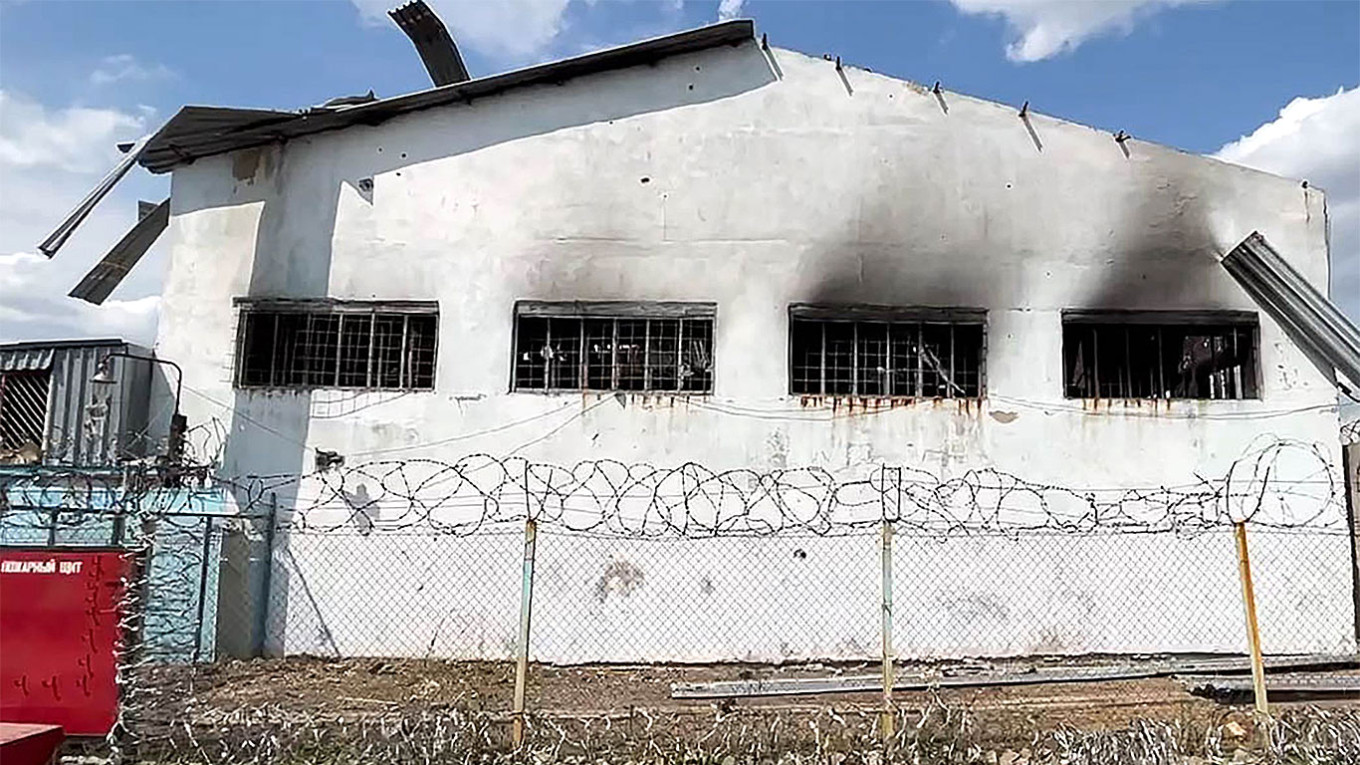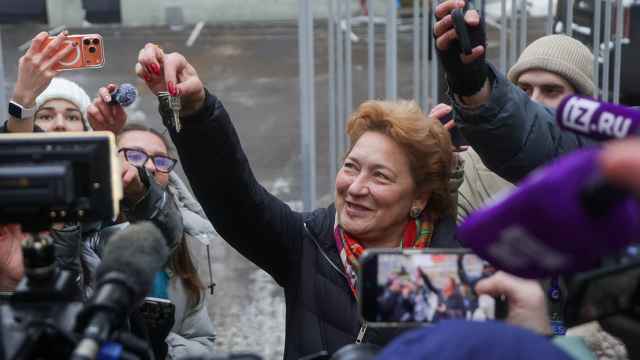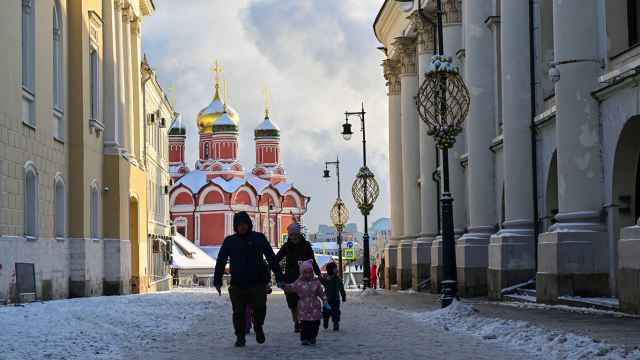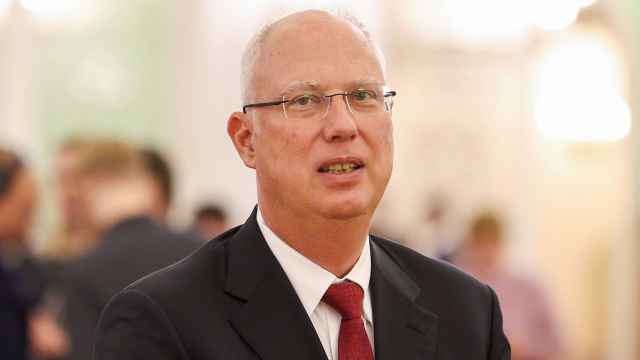Beatings, torture, forced labor, lack of food and medical care — this is how former inmate Yevgeny Maliarchuk described the Olenivka prison in occupied eastern Ukraine where he was held in the wake of the Russian invasion.
Exactly a month ago, the prison — known officially as Correctional Colony No. 120 — became notorious when over 50 Ukrainian prisoners of war were killed in an attack that both Russia and Ukraine accuse the other of carrying out.
While the site has since been visited by senior Russian officials — and even U.S. actor Steven Seagal — no independent investigators have yet been allowed inside. Instead, independent analysis and reports from multiple eyewitnesses suggest abuse and torture were routine in the facility ahead of the killings.
Maliarchuk said he was sent to Olenivka in early April after being detained by pro-Russia separatist fighters as he was helping to evacuate civilians from his home city of Mariupol.
“I didn’t believe conditions like those I faced [in Olenivka] still existed in the 21st century. When we arrived, we were forced to sit in a squat position for hours. Some prisoners were beaten. They [prison guards] searched us, stripped us naked and yelled at us. It was psychological torture,” he told The Moscow Times.
Amid the media spotlight in the wake of the July 29 attack, in which dozens of men apparently burnt to death, Russia made efforts to suggest the conditions inside the prison were satisfactory. Russian Defense Ministry-run channel Zvezda last month aired interviews with three wounded Ukrainian prisoners, who claimed they were treated well.
But other prisoners who have been released from Olenivka — like Maliarchuk — describe over-crowding and allege that torture and abuse were routine.
Maliarchuk said he spent his first three weeks in Olenivka along with about 35 other prisoners in a punishment cell designed for six people.
“We couldn't even sit down at the same time. Seven or nine people had to stand. We slept in three shifts. We had to lie on the concrete floor with our legs bent so that more people could fit,” he said. “We often heard people from the cell next door calling for a doctor because they were losing consciousness from lack of oxygen and the stench from the toilet.”
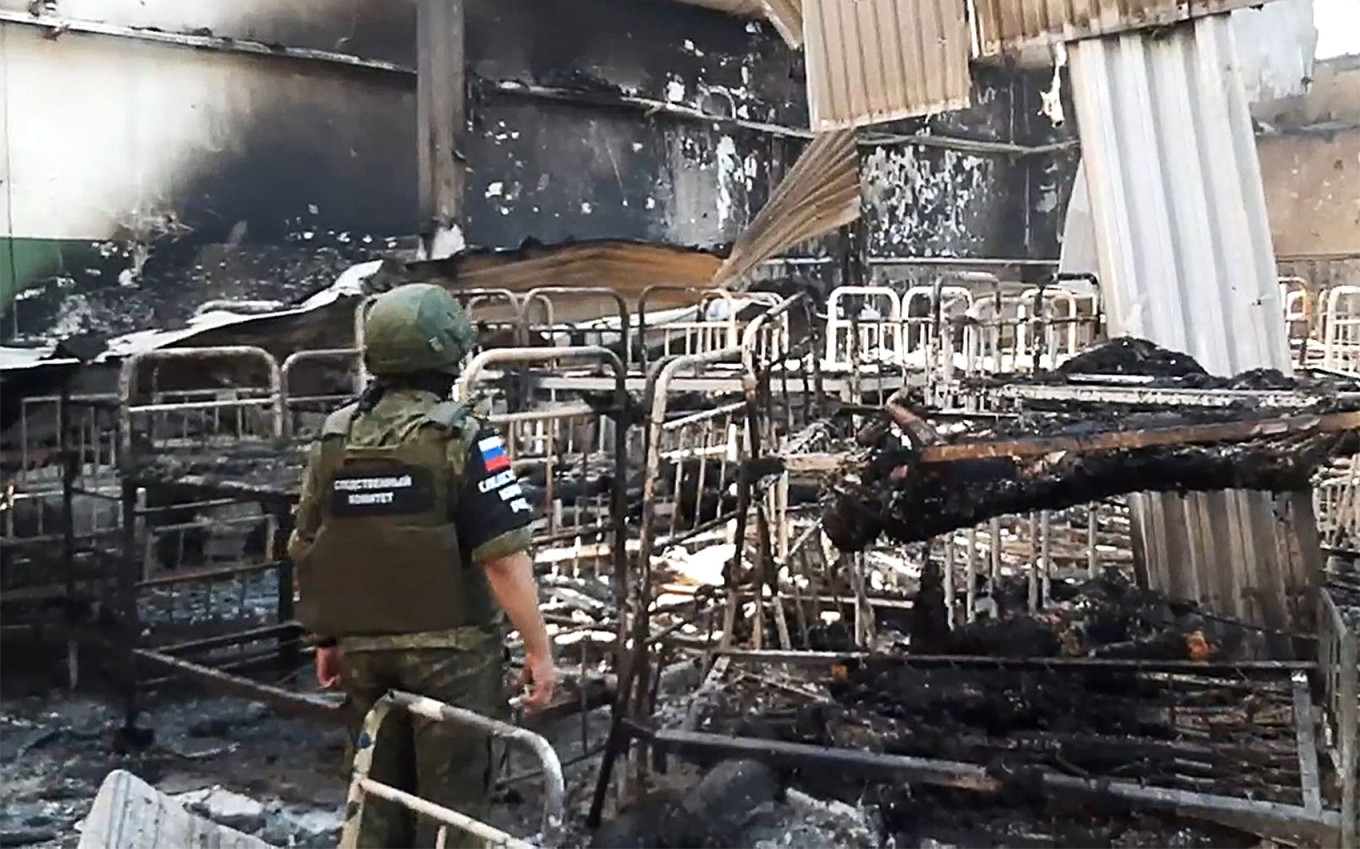
Asked whether the facility provided any medical help, he said that only imprisoned Ukrainian doctors treated Olenivka prisoners. “There was a lack of medicines,” he said.
A number of other former inmates at Olenivka have shared similar stories about their confinement that tally with Maliarchuk’s account.
“Almost every day we heard the beatings of prisoners,” Vitaliy Sytnikov, a Ukrainian civilian released from the prison camp, said last month in an interview with The New York Times.
And Anna Vorosheva, a 45-year-old Ukrainian entrepreneur who was released from Olenivka in July, told The Guardian that “torture happened all the time.”
Located just kilometers from the frontlines, Correctional Colony No. 120 was apparently recently reopened by the pro-Russian separatist Donetsk People’s Republic (DNR).
After Moscow’s invasion of Ukraine it became part of the so-called filtration system Russia used for processing Ukrainian civilians and military prisoners, according to a report published last week by U.S. government funded researchers at Yale University.
Russia and pro-Kremlin forces operated at least 21 such filtration facilities in and around the nearby city of Donetsk, according to the report, which also stated that satellite imagery suggested grave-digging took place near the facility in April and late July.
After three weeks in the crowded punishment cell, Maliarchuk was eventually moved to a barracks with “slightly better conditions” — a two-storey building that had grounds where prisoners could exercise. “I could go out and look at the sky,” he recalled.
While both civilians and soldiers were held in Olenivka, Maliarchuk described how they usually lived separately: he said he lived with 22 other civilians on the second floor of the barracks, while more than 200 soldiers were on the first floor of the building.
“All the other barracks were also overcrowded,” Maliarchuk said.
“Prisoners of war were also forced to sing [pro-Russian] songs — apparently to ‘re-educate’ them ideologically,” he added.
Perhaps the most high-profile prisoners in Olenivka were soldiers from Ukraine’s Azov Regiment, which is known for its far-right links and its three-month long defense of the city of Mariupol against an overwhelming Russian force.
Following the fall of Mariupol in mid-May, Russia said 2,500 Ukrainian soldiers surrendered. Many of them — including more than 500 fighters from the Azov Regiment — were subsequently sent to Olenivka, according to Maliarchuk.
Ahead of the Azov fighters’ arrival, the prison “changed its symbols”— DNR flags were taken down and Russian national flags raised instead, according to Maliarchuk. “Russian military officers visited [Olenivka], inspected the prison and the conditions. The heads of the prison also changed into Russian uniforms,” he said. “Russia took over the place.”
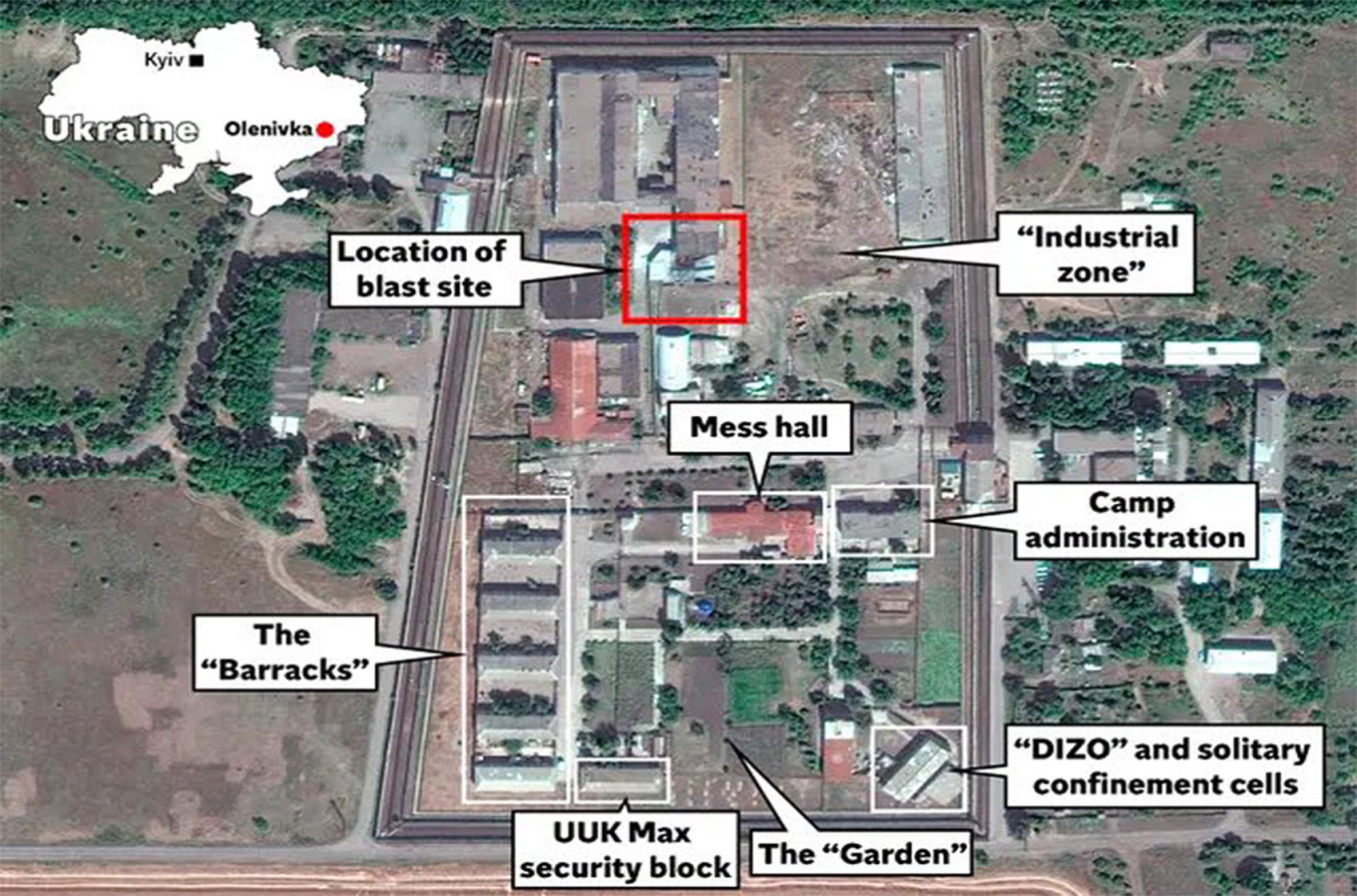
In footage published by pro-Kremlin media in early June, Olenivka prisoners in military fatigues are shown marching across a courtyard, queueing up to eat in the canteen, having their wounds treated and sleeping in tightly-packed bunk beds.
Less than two months later, however, at least 50 of these men died when an explosion ripped through one of the prison’s buildings. Subsequent footage showed twisted and blackened corpses and a line of bloodied bodies laid out on green sheets.
Maliarchuk told The Moscow Times that the building destroyed in the deadly attack was part of the industrial zone at the facility where no one normally lived.
“The [destroyed] building was a warehouse. I visited all the barracks during my prison time and can recognize the building. When I was in prison, that area was abandoned and prisoners didn’t live there. Apparently, people were transferred there on purpose,” he said.
According to satellite images, the blast damaged a building north of the housing barracks.
In the aftermath of the attack, Russia claimed Ukrainian forces fired U.S.-supplied HIMARS rockets to deliberately kill its own prisoners of war.
Ukraine has denied Russia’s claims, accusing Moscow of carrying out the killing.
Either way, there is little chance of an independent assessment any time soon.
In the aftermath of the attack, the International Committee of the Red Cross (ICRC) and the United Nations demanded an impartial probe into the treatment of Olenivka prisoners.
But, despite Russia’s Defense Ministry pledging it would allow access, neither agency has managed to visit the site in the month since the attack.
Instead, a Russian delegation headed by State Duma deputy Leonid Slutsky, which included U.S. actor Steven Seagal visited the site in early August. Slutsky claimed on Telegram that he was accompanied by “foreign journalists and international experts” who were given the opportunity “to talk with witnesses, including survivors of the rocket attack.”
Maliarchuk said he was freed “without any explanation” at the beginning of July, three months after the beginning of his incarceration and a few weeks before the killings.
Now living in Europe, he said that, prior to his release he had stopped believing he would ever get out of the prison. “My hope had just started to fade,” he said.
A Message from The Moscow Times:
Dear readers,
We are facing unprecedented challenges. Russia's Prosecutor General's Office has designated The Moscow Times as an "undesirable" organization, criminalizing our work and putting our staff at risk of prosecution. This follows our earlier unjust labeling as a "foreign agent."
These actions are direct attempts to silence independent journalism in Russia. The authorities claim our work "discredits the decisions of the Russian leadership." We see things differently: we strive to provide accurate, unbiased reporting on Russia.
We, the journalists of The Moscow Times, refuse to be silenced. But to continue our work, we need your help.
Your support, no matter how small, makes a world of difference. If you can, please support us monthly starting from just $2. It's quick to set up, and every contribution makes a significant impact.
By supporting The Moscow Times, you're defending open, independent journalism in the face of repression. Thank you for standing with us.
Remind me later.



